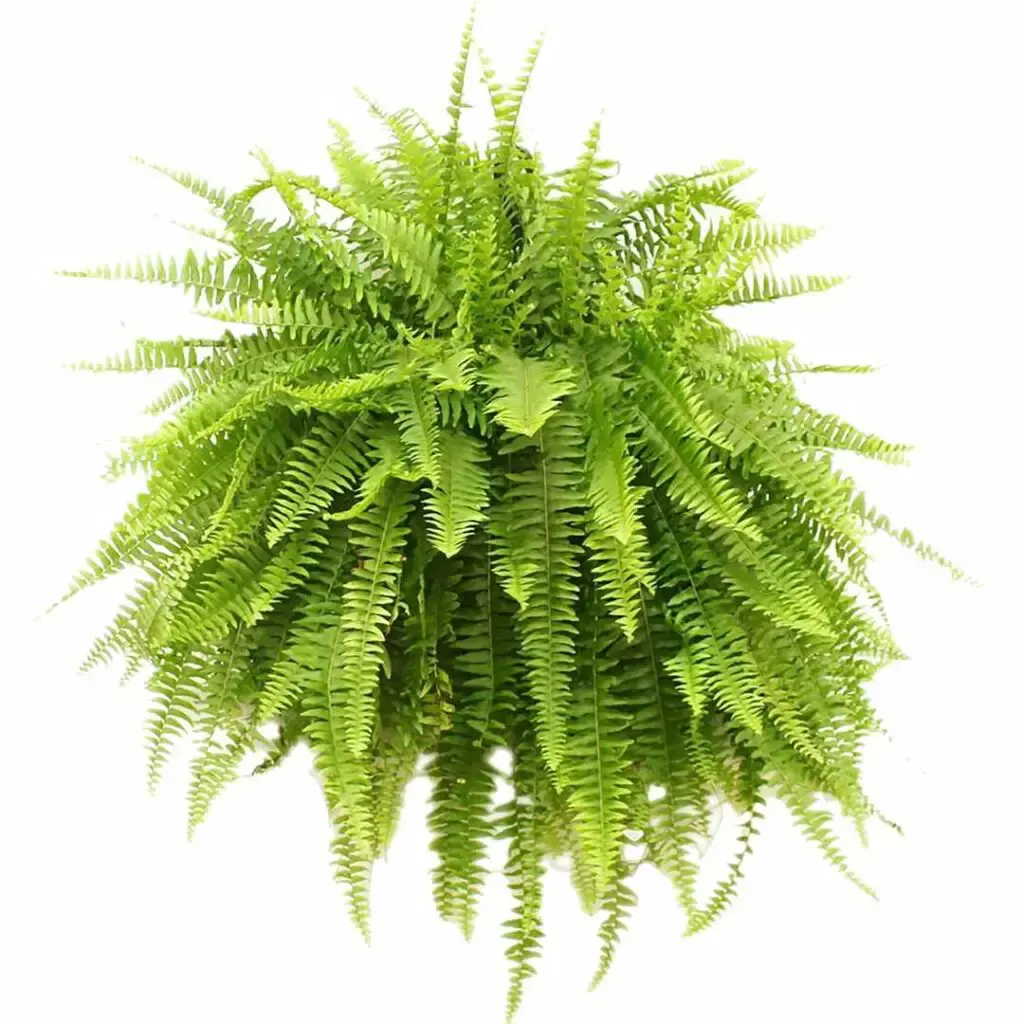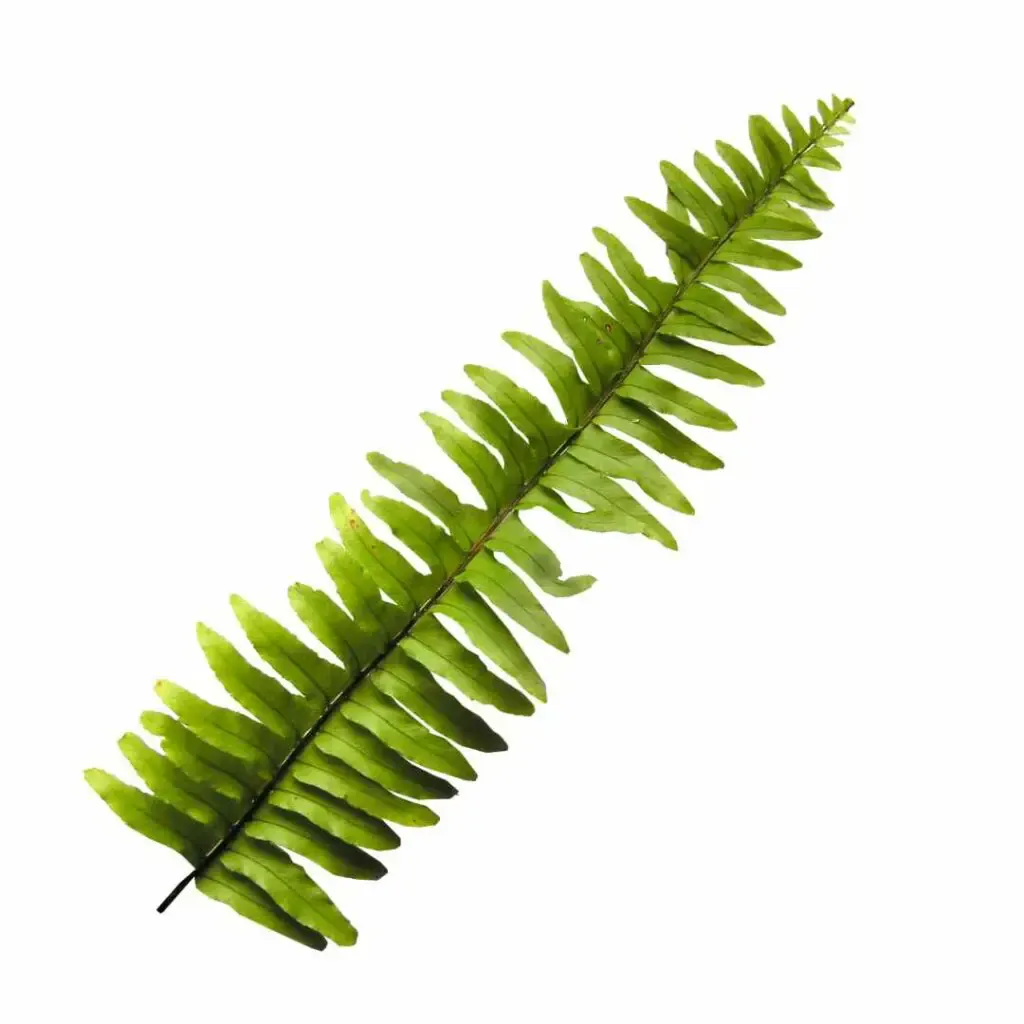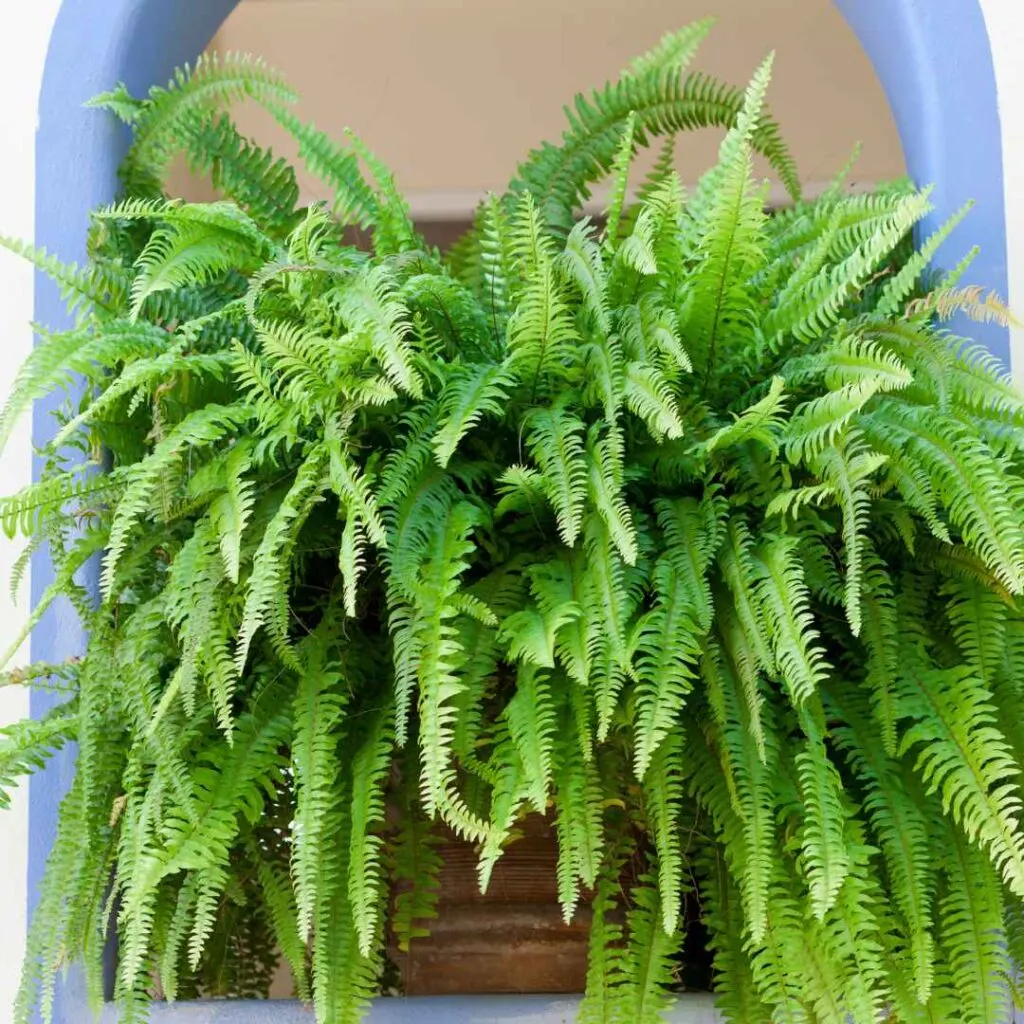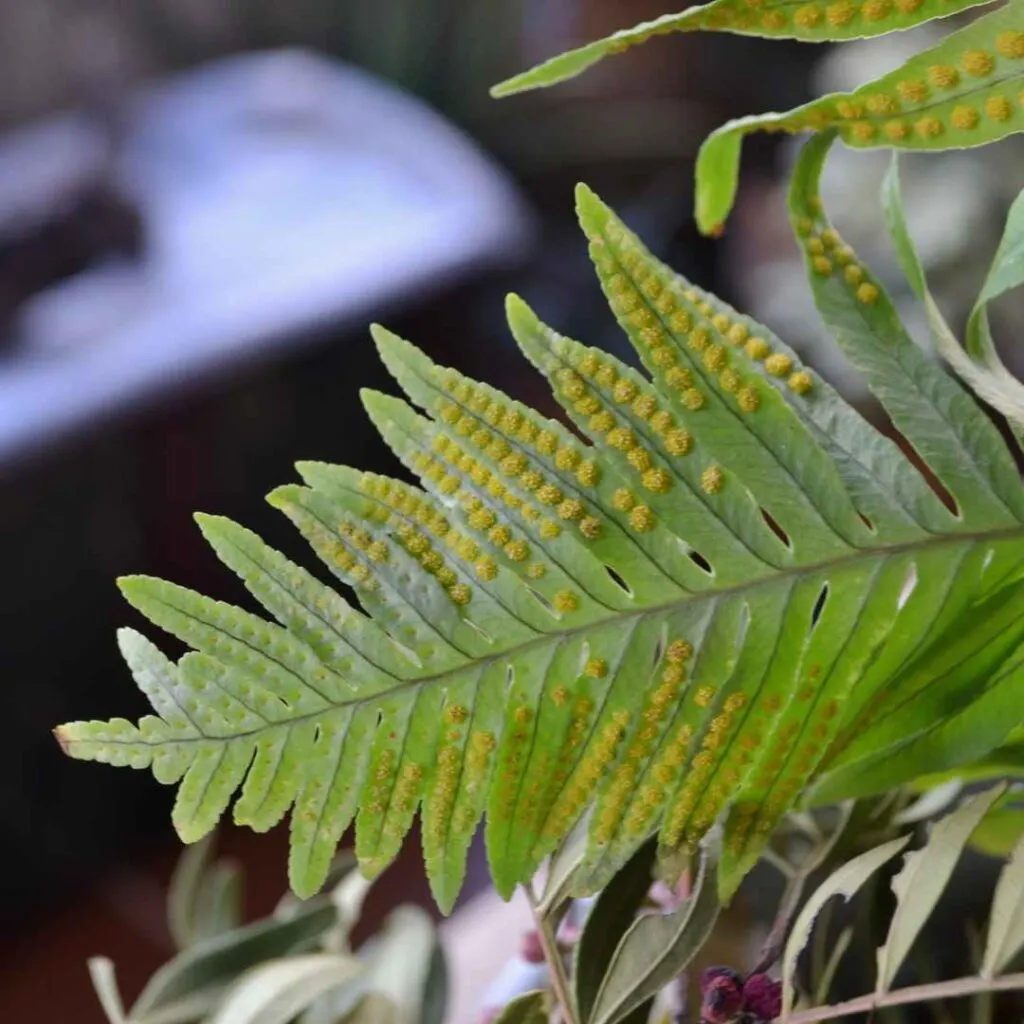The Kimberly Queen Fern, also known as The Sword Fern, is a popular plant that has graced homes for centuries. When properly cared for it can grow into a magnificent and sophisticated show piece for your living space or office. Kimberly Queen fern is very similar to its sister variety, the Boston Fern which is also referred to as a sword fern due to the elongated leaves. The Kimberly, however, is less likely to shed its fronds, which makes it very attractive for plant owners that want an indoor fern.
The Kimberly Queen fern has a more upright structure, making it well suited for planters, urns, and other containers. It has the potential to grow tall and make an impressive presence. In contrast, the Boston fern is a popular houseplant for hanging baskets because the leaves have a softer fluffier appearance; they also droop and hang over.
The lovely Kimberly fern is one of the easier varieties to care for in the fern family. it requires less humidity than other ferns, which makes this fern a bit stronger in surviving dry conditions than its sister ferns. The Kimberly Queen is Indigenous to Australia. It is given its name for the region of Kimberley where it grows naturally.

Where To Source The Kimberly Queen Fern:
Kimberly Queens are commonly available in local garden shops at various times and places. If you have a favorite local shop they might order you one too. Otherwise, we recommend ETSY for shopping plants. These are small family owned businesses and they specialize, so they know their plants. Please choose a well rated shop with good reviews. Happy Planting!
Is the Queen Fern Easy To Care For?
Ferns are known to be a little finicky, and do require some very specific care in order to thrive and truly stand out in your home. The said, The Kimberly fern is one of the easier ferns to care for because it is sturdy and tends to do well in containers.
Like all ferns, The Queen will require constant humidity and moisture to grow its lovely fronds to their best advantage, a trait all ferns are known for. They thrive in warm humid outdoor environments, and this needs to be mimicked in an indoor lifestyle. Dry, brown frond tips are a sign of dry air.
Regular pruning is also very important for ferns to keep them looking their best. The Kimberly queen fern will shine when it is manicured and pruned. Pruning, although not a regular requirement, is occasionally essential for Queen fern care because it rids the plant of unhealthy fronds, which allows the healthy ones ample moisture, nutrients, and sunlight. It also encourages new healthy growth.
The Kimberly Queen Fern Requires Very Specific Sunlight Exposure
Because ferns have delicate fronds that are prone to browning, wilting, and drying out; It is very important that your sword fern is living in the best spot possible for indirect sunlight exposure. Partial to low light conditions are best for the Kimberly Queen fern. It needs to be protected from hot, direct sunlight at all times.
Place your Queen fern near a bright window where she will receive indirect or dappled light, in order to protect her delicate fronds. Outdoors these plants prefer shaded environments with dappled sunlight that shields them from heat and intense rays.

Getting To Know Your Kimberly Queen Fern
Sword ferns are some of the most popular varieties in the fern genus for houseplants. They are beautiful and can make quite the statement with proper care, and the right living conditions. Here is a quick overview of the particulars about your Queen fern, and some of the general care requirements that you will need to provide for her.
| Care Needs: | Kimberly Queen Fern Requirements |
|---|---|
| Planting/repot Time | Spring growing season is the best time for planting outdoors or repotting indoors. |
| Growth Size | 2-3 feet tall, 2-4 feet wide |
| Light Requirements | Partial sun, protection from intense heat and direct strong sunlight. |
| Soil Type | Moist, well-drained soil |
| Watering Schedule | Regular, keep soil wet about 1-2 inches down |
| Temperature | Thrives in mild temperatures of 60-70°F, avoid cold drafts |
| Humidity | Requires high humidity, use humidifiers or pebble trays (Read more about humidity for Houesplants here) |
| Fertilization | Liquid fertilizer during active growth in spring and summer |
| Soil pH | Neutral to acidic, regular potting soil and peat |
| Pest and Disease | Generally not overly susceptible, but can be infested if not properly cared for |
| Additional Care | Protect fronds from intense rays of heat, or heat vents in your home. |
Be selective about the water for your Sword Fern
Most plants will not do well when watered with standard tap water. This is true because plants, and the Kimberly Queen is no exception, cannot tolerate the added chemicals that are found in most tap water.
Well water can also be a problem if it has a high mineral content. Ferns do not do well with harsh, high mineral content water as it will build up deposits in the soil, and even burn the leaves. It is best to use either filtered water, reverse osmosis, or even distilled water.
Depending on the amount of sunlight and heat exposure your fern is getting, you may need to water more than once a week at times throughout the year. When the soil is dry roughly 1-2 inches down, it is time to water your queen fern.
Ferns are thirsty plants, and although this one is hardier than some of its other sister ferns, she does require a higher moisture level than a lot of other houseplants to maintain those lovely fronds at their best.

When Should You Repot the Kimberly Queen Fern?
This fern actually likes being root bound to some extent, so frequent repotting isn’t necessary. However, all plants will eventually need to be repotted; whether due to nutrient depleted soil, an improper container, or a young plant that has outgrown its current container repotting is a necessary care requirement for all houseplants.
There are many different signs that your plant is ready or in need of being repotted. It is important to know them all, and how they directly relate to your specific plant.
- Choose a container that is roughly 2-3 inches larger in diameter and depth than the current one
- Be sure the container has good drainage holes
- Always use new soil that is balanced and mixed for your plants specific ph needs
- Water the fern and keep an eye if it needs an adjusted schedule while acclimating
- Do not fertilize the newly repotted fern during the first month, so as not to burn the roots
- Expect the fern to go through a short period of shock while it adjusts, this is normal for all plants
How do you Propagate a Kimberly Queen Fern?
Rhizome Division
This is the easiest and fastest way to propagate your kimberly queen fern as long as you have a mature plant. A mature and well established fern will have rosette-shaped vegetation points called funnels on the rhizome. Using the right tools, and following the proper procedures for propagating and planting, simply cut at the rhizome and repot. The best time to propagate is when you are already repotting your fern.
We have a YouTube channel with a variety of instructional videos that can help guide you in your plant journey. This video is a great overview of repotting and planting in general.
Spore Propagation
The challenge with spore propagation is that many varieties, especially cultivated breeds or plants purchased through a commercial supplier, are sterile and will not result in a new fern. The spores can be seen on the underside of the fronds, and act as the seeds of the plant for reproduction. They can be seen when there are enough to grow a cluster, and will look like tiny brown dots underneath the leaves.
The process of propagation through spores is easy enough, so it’s a great method to use if you do have a plant that will produce fertile spores. The spores would need to be collected, germinated, and grown into frond sprouts. At that point, once they are strong enough, they can be planted.

What Other Ferns Make Great Houseplants?
Ferns are a household favorite for good reason. They are beautiful, creating a sophisticated presence, and provide visual interest and a large focal point in every space that they live. We have featured a few of our favorites here on the blog. If you are interested in learning more about the fern family, and want to see if any others interest you, be sure to check these ones out.
- The Japanese Painted Fern, a lovely purple and silver fern
- Birds Nest Fern, looks a little like lettuce
- The well known Boston Fern, a fluffy container option
- The Blue Star Fern, doesn’t really look like a fern with it’s thick leaves and strong structure
Follow Us:
Find us on YouTube, Instagram , Pinterest and TikTok! We love to Plant chat. We also comment, like and occasionally share your content to our daily stories. We’d love to see your plants. Share your joy in your houseplants. Happy Planting!

